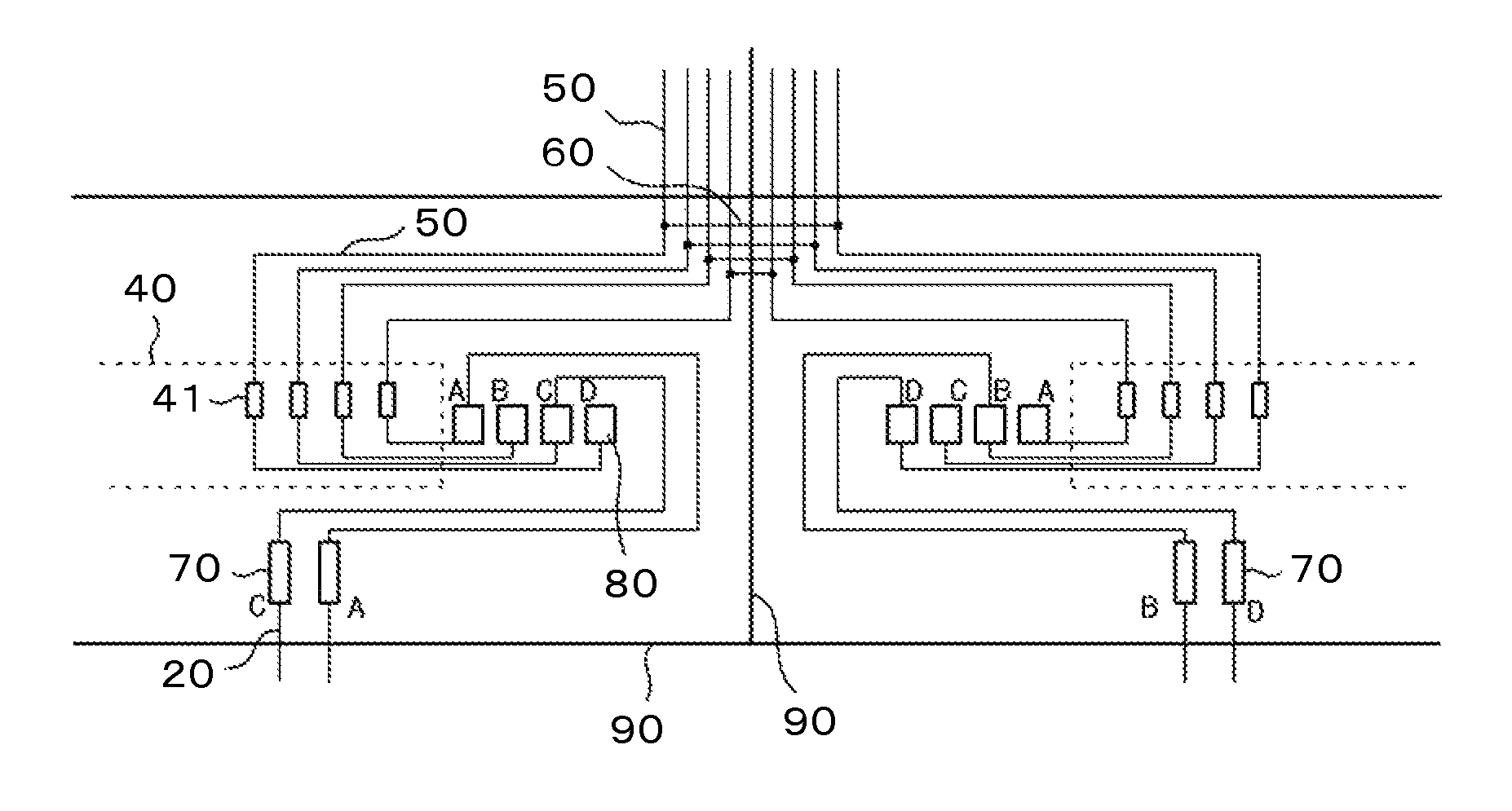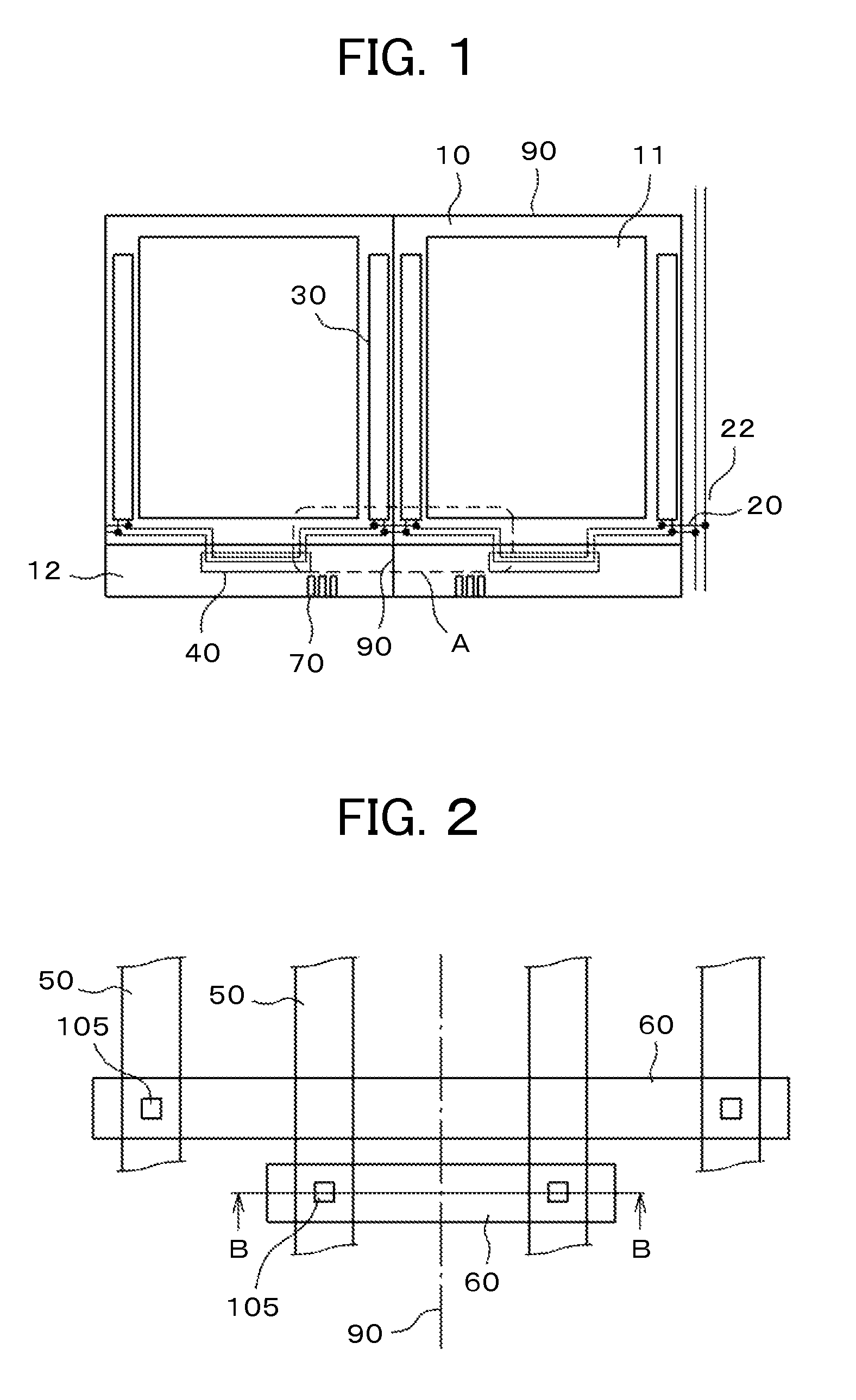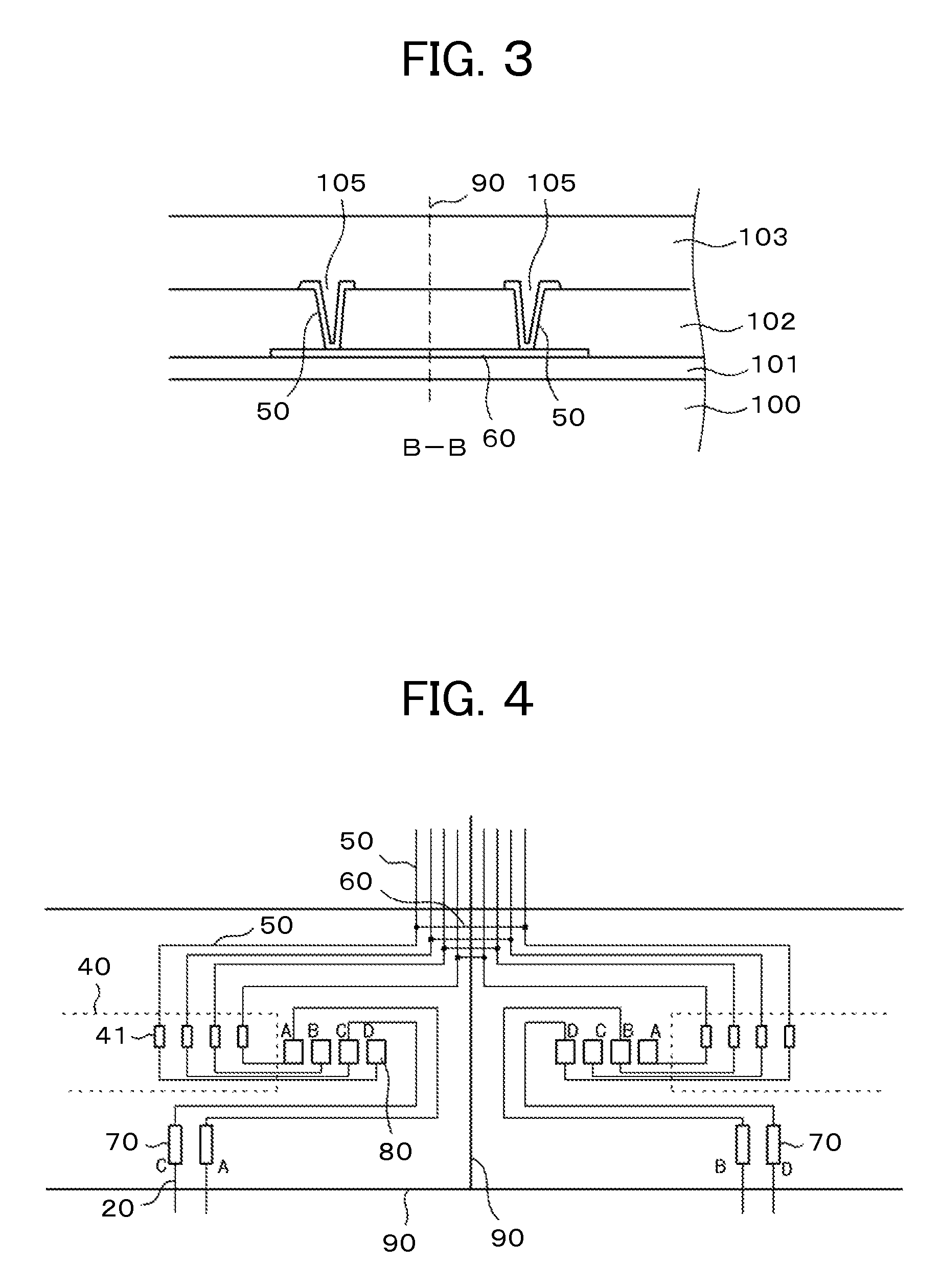Liquid crystal display device preventing destruction by electro static charge
a liquid crystal display and electrostatic charge technology, applied in non-linear optics, instruments, optics, etc., can solve the problems of dielectric breakdown between wires, breakdown of tfts, and inefficiency in manufacturing individual liquid crystal display panels, so as to suppress the growth of liquid crystal cells, reduce the number of flexible wiring substrate terminals, and reduce the terminal count
- Summary
- Abstract
- Description
- Claims
- Application Information
AI Technical Summary
Benefits of technology
Problems solved by technology
Method used
Image
Examples
first embodiment
[0038]FIG. 1 is a plan view showing two TFT substrates according to the present invention, the substrates being located on a mother TFT substrate. On the TFT substrate shown in FIG. 1, built-in gate circuits 30 are formed on both sides of a display area 11. In FIG. 1, an IC driver amounting area 40 is formed in a terminal area 12. Some of the wires from the gate circuits 30 extend to the IC driver mounting area 40. Flexible wiring substrate terminals 70 are formed at the edge of the terminal area 12. In an ordinary setup, static electricity countermeasure wires 20 extend from the flexible wiring substrate terminals 70 to the outside.
[0039]In FIG. 1, the gate circuits 30 of the adjacent liquid crystal display panels are formed in a manner flanking a scribe line 60 that separates the liquid crystal cells from one another. To prevent dielectric breakdown caused by static electricity during the manufacturing process, the wires from the gate circuits 30 need to be connected via the stati...
second embodiment
[0049]FIG. 5 illustrates examples of the signal lines 50, connecting wires 60, flexible wiring substrate terminals 70, and static electricity countermeasure wires 20 making up the second embodiment. Also in FIG. 5, four wires from the gate circuit, not shown, in each liquid crystal cell are extended to the IC driver terminals 41 in the IC driver mounting area 40. The second embodiment is different from the first embodiment in FIG. 4 in that there are three flexible wiring substrate terminals 70 in the left-hand liquid crystal cell while there is one flexible wiring substrate terminal 70 in the right-hand liquid crystal cell.
[0050]In FIG. 5, the wires leading up to the inspection terminals 80 are the same as those in the first embodiment of FIG. 4. The difference is that the wires from the inspection terminals 80 up to the flexible wiring substrate terminals 70 are made different between the left-hand and the right-hand liquid crystal cells. This entails there being different numbers...
third embodiment
[0052]FIG. 6 illustrates examples of the signal lines 50, connecting wires 60, flexible wiring substrate terminals 70, and static electricity countermeasure wires 20 making up the third embodiment. Also in FIG. 6, four wires from the gate circuit, not shown, in each liquid crystal cell are extended to the IC driver terminals 41 in the IC driver mounting area 40. The difference between the third embodiment and the first embodiment in FIG. 4 is that the signal lines 50 in the left-hand liquid crystal cell are directly connected to the inspection terminals 80 without the intervention of the IC driver terminals 41 in the IC driver mounting area 40. The signal lines 50 in the right-hand liquid crystal cell are connected, as in the first embodiment of FIG. 4, to the IC driver terminals 41 in the IC driver mounting area 40 before being connected to the inspection terminals 80.
[0053]In the structure shown in FIG. 6 where the connections with the wires and terminals leading up to the flexibl...
PUM
| Property | Measurement | Unit |
|---|---|---|
| flexible | aaaaa | aaaaa |
| semiconductor | aaaaa | aaaaa |
| light transmission rate | aaaaa | aaaaa |
Abstract
Description
Claims
Application Information
 Login to View More
Login to View More - R&D
- Intellectual Property
- Life Sciences
- Materials
- Tech Scout
- Unparalleled Data Quality
- Higher Quality Content
- 60% Fewer Hallucinations
Browse by: Latest US Patents, China's latest patents, Technical Efficacy Thesaurus, Application Domain, Technology Topic, Popular Technical Reports.
© 2025 PatSnap. All rights reserved.Legal|Privacy policy|Modern Slavery Act Transparency Statement|Sitemap|About US| Contact US: help@patsnap.com



